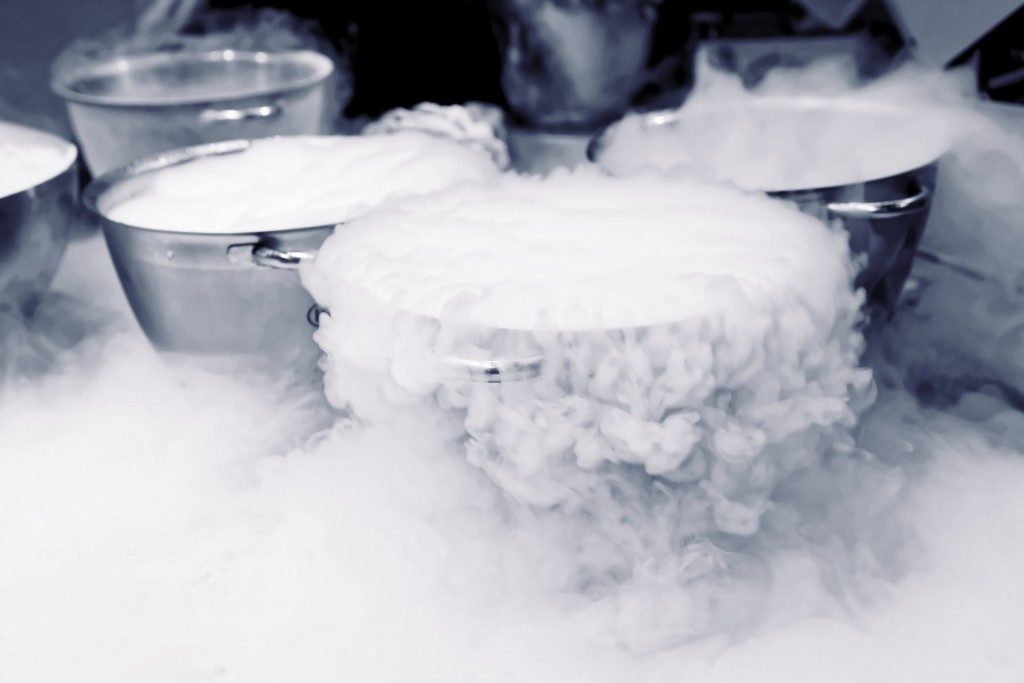Liquid nitrogen and other cryogenic liquids have escaped the confines of university research labs, reaching hospitals, skincare clinics, computer hackers, and restaurants. However, handling cryogenic liquids is risky and requires stringent protocols.
Extremely Cool Applications
Cryogenic liquids are commonly used in the storage of organic matter, but it has also seen a growing use in several diverse fields. In medicine, liquid nitrogen is used to preserve sperm, ova, and early embryos for use in IVF or in vitro fertilization. It is also used to preserve blood and bone marrow cells, as well as certain microorganisms. Surgeons will sometimes apply the liquid to the scalpel to remove cancer tissue or directly use it to freeze cancer cells or just simple warts. Extreme overclockers have started using cryogenic liquids to cool down computers, maintaining running temperatures of -70°F and below. Chefs have incorporated liquid nitrogen into the creation of various dishes like creamier ice creams, frozen popcorn balls, powdered fruits and berries, frozen cereals or cheese puffs called dragon’s breath, and various alcoholic drinks.
Associated Risks
Handling cryogenic liquids can be extremely dangerous. Exposure can instantly cause severe frostbite or frost burns, particularly around the eyes. Mishandled liquids can cause varying degrees of tissue damage, depending on the amount of duration of exposure. Spilled liquids can revert to their original gaseous state, displacing the oxygen inside the room and causing asphyxiation. Even a small amount of spilled liquid can be dangerous because of their extreme expansion ratios: 1 to 700 for Nitrogen; 1 to 750 for helium; 1 to 850 for Argon, Hydrogen, and Oxygen; and 1 to 1445 for Neon. This expansion ratio also increases the chances of ruptures and explosions, especially when tanks and equipment don’t go through regular checks and maintenance or are stored improperly. Standard cryogenic tanks typically stand at 1.5 meters and contain 100-150 liters of liquid. When part of that liquid turns to gas at a ratio of 1 to 700 (or more), the resulting explosion can be massive and quite damaging. Explosions can also cause exposure to the tank’s liquid contents to anyone near them.
Safety Measures

Always wear safety gear when handling cryogenic materials. This includes protective clothing and a face shield. Note that extreme cold can make various materials brittle and easy to break, especially rubbers and plastics. Exclusively use equipment specifically designed for handling cryogenic liquids. Make sure to store cryogenic liquids in well-ventilated areas away from the sun, heat sources, or where temperatures tend to fluctuate. Most of these liquids are odorless and colorless, requiring oxygen depletion alarms for added safety. Maintenance is key in keeping your tanks, valves, and transfer hoses in good working condition. Obstructed safety release valves; dented tanks; and vessels, valves, and tubes with trapped liquid will increase the chances of ruptures and explosions. If at any time you hear strained noises coming from a tank’s pressure relief valve or see signs of frosting, immediately leave the area, alert others to do the same, and call emergency services.
Working with cryogenic liquids can be pretty cool, but it can give you a bad case of frostbite. Understand the risks involved and always prioritize safety.
